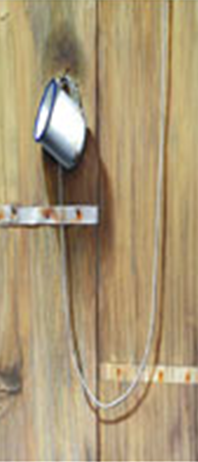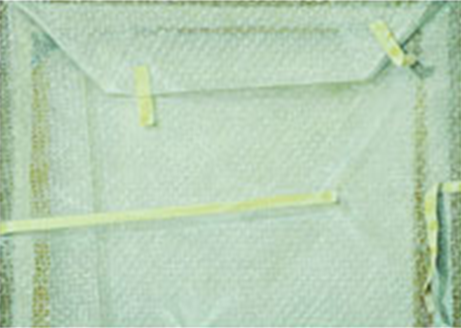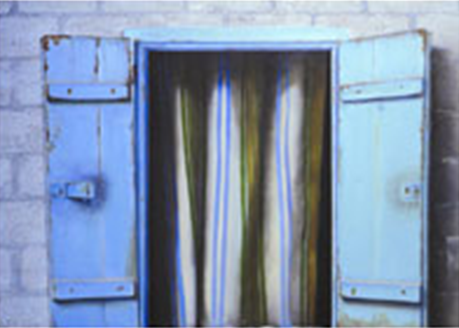Shakeel Siddiqui
This is a collection of articles archived for the excellence of their content. Readers will be able to edit existing articles and post new articles directly |
Shakeel Siddiqui
COLLECTOR’S CHOICE: Beyond the surface
Shakeel Siddiqui’s objects are warm and bodied, curtains move, clothes retain the form of the wearer, bricks are weathered, and each composition tells a story, writes Marjorie Hussain
An exhibition of recent paintings by Shakeel Siddiqui witnessed once again the uncanny trompe l’oeil quality of the artist’s work, in which he convinces the viewers that what they see is the real thing. This concept is traced back in art history to the Greek period. The first art writer, Vasari, documented an incident of the 14th century when Giotto, then a student of Cimbue, painted a fly on the nose of one of his master’s portraits, which Cimbue tried to flick away.
Laila Shahzada owned a painting by Siddiqui, it was a hand towel hanging on a rack, and she delighted in watching her guests reach out for the ‘towel’ after washing their hands. The visual illusion of Super-realism involves the detail with which Siddiqui reproduces the textural quality of any material or object; silk, denim, wool, wood or lace. Often contrasting materials are juxtaposed to create piquant comparisons such as of warm grained wood with cool crystal or delicate laces.
Explaining the philosophy of his work Siddiqui speaks of his desire to prove that every object has its own character and beauty. Working in oil on canvas, he spends hours at his easel focused on painstaking precision and detail, preferably in an artificial light.
In the collection of paintings displayed at the Gulmohar Gallery, Karachi, were brilliant examples of his signature work; ‘The Alley Beyond’, a 4’x 6’ chick covered window image, offered glimpses of a street beyond with a row of buildings tantalisingly revealed through the slats. Another titled ‘The Book Shelf,’ had one reaching out to select an interesting looking book.
Arguably the most convincing paintings depicted a bubble wrapped parcel, and an unfinished drawing. The first showed the back of a canvas through a bubble wrap so ‘real’ that one was drawn to finger the ‘bubbles’. ‘Unfinished drawing’ showed a sketch on a sheet of paper, stuck to a drawing board with paper stickers. Again ones eyes were totally fooled, as one tried to ‘feel’ the imaginary stickers casting tiny shadows on the paper ‘fixed’ on the ‘wooden board’. It was an amazing work of art by an artist who is the ‘Houdini’ of illusion.
Viewing the work in exhibition was a serendipitous experience with a number of windows opened and closed; clothes and books placed on a chair by an obviously young person, and a study table where one could almost glimpse the person who has just left the chair at an angle, and glasses awry. Super-realism is an art form practiced by artists in many parts of the world. The difference in Siddiqui’s art is that he gives his subjects a tangible presence.
A master of manipulating shadows, he breathes narration into his work with a brush and the result is far from a cold representation of an object. Siddiqui’s objects are warm and bodied, curtains move, clothes retain the form of the wearer, bricks are weathered, and each composition tells a story. Often the artist is asked about his method and technique but how does one explain magic? Viewing a collection of his canvases is to take an enchanted journey into many lives.
Discussing exhibitions abroad, Siddiqui tells that he was surprised that in London the public appeared to prefer the Still-Life genre of his work in spite of the tradition of landscape in British painting. In 2001, he exhibited at the Highgate Gallery, London, and was pleased when art students visited the gallery and discussed his technique with him. Three art collages organised visits by their students who bought their drawing books along and, with Siddiqui’s approval, sketched the various paintings.
In 2003, he showed his work in a gallery close to Rotterdam, and Siddiqui spoke of the practical gallery custom. The owner bought several paintings, which were rented out to businesses and householders who admired the paintings but could not afford to buy them outright. They were able to take them on hire for various occasions, or for months at a time.
Siddiqui has lived abroad for some years, and currently divides his time between Pakistan and Canada. In Karachi he is much in demand for restoration work, and is a visiting faculty member of the IVSAA. In Canada, where his family currently resides, he conducts workshops and is a frequent lecturer on art. He lived for some years in Dubai, where he taught art at the faculty of Oil Painting and Portraiture, Dubai International Art Centre, and has mounted numerous exhibitions of his work in various countries throughout the world. As a young artist in Pakistan in the 80s, Siddiqui was a regular award winner at group exhibitions in Karachi and Lahore. In Dubai in 2000-2003, he was awarded the ‘Viewers’s Choice’ award from the Dubai International Art Centre.
In the USA in 2002, he was awarded an ‘Honourable Mention’ by the Artist’s Magazine, and in 2004, he was a finalist in the category of Still-Life at ARC’s first International Salon Competition, USA.
Siddiqui admits that his burning ambition is to execute a series of paintings documenting Pakistan’s history. He has painted a 44ft x 8ft portrait of the Quaid-i-Azam taking the oath of office, now in the Quaid-i-Azam Museum, and longs to paint the history of the making of Pakistan in a series of large scaled murals. “India has a notable collection of such work,” he says, “We also need to have our history documented for all times to come.”
On the cover: The green sweater
Facing page: The book shelf III
Top: Still life with mug
Top right: Bubble wrap
Right: The brick wall





